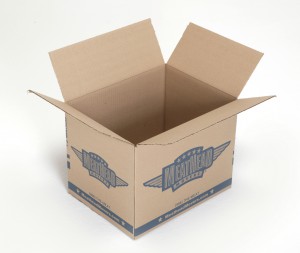
Welcome back to this free online series that walks you through how to write a sales page. Last time, we looked at some of the basics of getting started, namely being able to identify what a sales page was and when you might use one in your business.
But now that you’re all settled in, we can crack on with the work!
A lot of copywriting advice tells you to start by getting to know your customer, which is certainly a critical factor in writing a persuasive sales page. However, my experience of helping people write a sales page shows that practically, it’s easier to start with what it is you want to sell.
This is easier because you actually have the product, or service or programmed outlined. It’s a pretty simple statement of the facts.
With your customer however, in addition to research, there will also be answers based on intuition, experience, and a little guided guess work.
In other words, it’s much easier to start pinning down the facts of a ’32 page eBook with 6 chapters on the subjects of…’ than it is to outline the profile of a business owner, between 35-45, who has possibly just left their job, or been made redundant, or maybe self-employed…
You get the picture.
I find that if you can make quick progress at the start, you’re less likely to feel overwhelmed by the writing job ahead of you.
Of course, this is just my way of doing things but I have found if I ask someone to tell me what their product is they can reel off answers pretty quickly. When I ask them about who their ideal customer is, it takes a little more work.
So let’s start with the simple stuff first right?
Why little details lead to big problems
One unnecessary mistake made with sales pages is not providing enough details about your product for your customer to understand what it is you are actually selling. Even missing out something small can mean that:
- Your ideal customer is not clear about what you’re selling
- People are missing important details about the offer
- People think your offer includes something it doesn’t
This usually happens when people jump straight into writing a sales page. They’re so focused on thinking about telling a powerful story, using metaphors and psychological triggers that they forget to create a clear and simple outline of what people are actually going to get with their money.
It also happens because we live, breathe and think about our products in our sleep. We know them inside out.
And on some level, we assume our customers do too.
But they don’t of course. 🙂
Save time and write smarter
One of the reasons I get people to list the details of their product first isn’t just because it’s a gentle way in, but because it saves time later on.
If you have a cheat-sheet that contains all the important details of your product you don’t have to think about them when you’re knee-deep into writing your sales page. You can grab your product sheet, copy the details down and away you go.
The other great thing is that at this stage we’re not even thinking about benefits, or objections, we’re just looking at what your product actually is.
Simple.
And because you’re spending time at the start pinning down all the vital details, you’re less likely to miss out important details later
Describe it to an alien (or a 12-year-old)
That sub-heading does not mean that 12-year olds are aliens right? 😉
What it means is you need to describe your product to someone who is completely new and uninformed about what you have. So someone who:
- Doesn’t understand your industry
- Isn’t familiar with your product
- Isn’t familiar with you and what you do
Now, you might say
“but my audience IS familiar with me and what I do, I don’t want to patronise them”
And that makes perfect sense.
But being able to talk in simple terms is not talking down to your customer, it’s talking clearly to them.
Now in the next article, you’ll see how you filter some of these details so that we’re not telling our customer what they already know, but for now, we’re listing everything.
Just trust me 🙂
Your writing exercise
Okay, so, if possible get your product out, or open it (if it’s an eBook) or access it (if it’s an online program).
I want you to write down as many details as possible:
- What does it look like?
- What actually is it?
- How long is it?
- How many pages is it?
- How do customer’s access it or use it?
- What can it do?
- What subjects does it cover (if it’s an eBook or course)
- If it’s a physical product, how big is it? What does it weigh?
Leave no stone unturned. Imagine that you are explaining this to someone who has either travelled here from 200 years ago, is visiting from another planet or is… well, about 12.
If you want to see what a difference these details can make in your copy, consider the following.
Without details:
Use our product to give you a simple snapshot of your business’s productivity in minutes.
With details:
Using a web-based login you’ll be taken to your personal online dashboard. Here you can view reports that show employee productivity by team, retail location and even down to the individual. You can compare sales, revenue, stock levels and download all reports into Excel or as a pdf.
Which do you think is the most compelling to someone who is thinking about investing in the product?
At this stage, don’t worry too much about what is and is not relevant, simply get all your details down and we’ll look at how to use those details as we work our way through the rest of the series.
Not sure what details to share? Let me know a bit about your product in the comments and I’ll ask you the pertinent questions!

[…] If you’re asking for an investment from your customer, they are going to want to know what that investment gets them, and I don’t just mean the benefits of your offer, I mean the important product details. […]